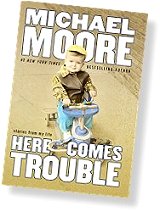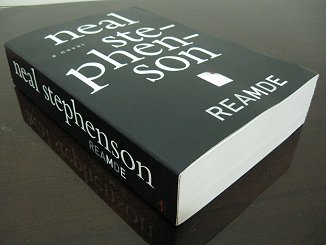Overall, pleased with this, as I'd taken several days to draft and finalise it.
The title for this post was the original title of the piece; who knows why it was changed. Nor was the standfirst, shown below, used for the final versions. Perhaps I'm not obliged to provide either, but from my brief stint in journalism, both can be hard to come up with.
The review copy was not the one the bookstore wanted to promote, but the hardcover movie-poster version which you can
buy online.
Tale of human courage
From above, the hidden valley seemed like the Garden of Eden. Then the plane went down...
first published in
The Star, 28 August 2011
Once upon a time, the US media went nuts over the abduction and eventual rescue of one Private Jessica Lynch in Iraq in 2003. But hers was not the only dramatic one of a female soldier in American history.
Professor of journalism Mitchell Zuckoff was doing some research when he stumbled upon an article about a rescue operation that took place towards the end of World War II. He eventually came back to it, did some reading and leg work and put it all into a book.
Zuckoff's
Lost In Shangri-la: A True Story Of Survival, Adventure, And The Most Incredible Rescue Mission Of World War II – breathe, soldier, breathe! – also features a female member of the US Armed Forces. Corporal Margaret Hastings of the Women's Army Corps (WAC) was part of the Far East Air Service Command (shortened to "Fee-Ask") based in Hollandia in the Dutch half of New Guinea (the island is now split into West Papua and Papua New Guinea). But the circumstances from which she needed rescue were quite different from Lynch's situation.
On May 13, 1945, Hastings and over 20 crew members and passengers boarded the
Gremlin Special, a C-47 transport plane, for a sightseeing tour of a remote jungle valley surrounded by mountains. Colonel Ray Elsmore, also based in Hollandia, supposedly discovered this valley which was later dubbed "Shangri-La" by two war correspondents, George Lait and Harry Patterson. Sightseeing tours of Shangri-La, inhabited by supposedly savage, spear-wielding Stone Age tribes, became a treat for those stationed at Fee-Ask.
At that time, the only way into Shangri-La was by plane, which was a risky undertaking. Mists often hid nasty surprises for unwary or inexperienced pilots. On the day of the crash, Zuckoff writes, such a pilot may have been at the helm of the
Gremlin Special. Of the passengers and crew, which included nine members of Hastings' WAC unit, only three would ultimately survive: First Lieutenant John McCollom, Tech Sergeant Kenneth Decker, and Hastings.
Though meant to be a journalistic record, this book feels a bit like a documentary or film. A series of events come together to form a credible historical narrative of not just the rescue and the profile of the key figures, but also of the natives, the valley and those who were there before, and the war raging around them.
Among other things, we learn of C. Earl Walter Jr and his Filipino-American paratroopers who were sent to rescue the three. We discover that Colonel Elsmore was not the first to discover Shangri-La, now called the Baliem Valley. We observe breathlessly as the daring rescue plan unfolds. We look on in horror as a drunk rogue filmmaker parachutes out of a plane. We are also given a glimpse of the lives and cultures of the Papuan natives, who are more than what the reporters say they are.
And as more and more Yankees and their allies pour into the valley, a whiff of danger arises as the natives' regional leader feels threatened by the foreign presence and begins plotting....
Just as it was in the tale of Jessica Lynch, Margaret Hastings is very much the heroine and pivotal figure here, even though other key figures are given more or less equal time. The book starts and ends with Hastings. She was even crowned "Queen of Shangri-La" by the press then, a title she would come to loathe. Another edition of this book,
Lost In Shangri-la: Escape From Another World, is done up with a movie poster of a cover (pictured here) that rubs that fact in.
One could perhaps sigh at the author's apparent sexing up of a dramatic rescue operation by centring the whole thing on the attractive female survivor. But Zuckoff keeps the narrative chaste by sticking to the historical and journalistic aspects of the rescue. And there's lots of history, with bits of anthropology and anecdotal accounts. However, some attempts at philosophising, like how the act of war is more crucial to the natives' way of life than ours, sound laboured.
It could've been written with a bit more dramatic flair, but judging from the extensive bibliography, one supposes that the author may have been worn out by all the research he'd done – look at all those notes at the back!
Then again, perhaps not. Poignant, gritty, engaging and occasionally comic,
Lost In Shangri-La can stand on its own as a compelling tale of human courage, camaraderie and survival without any embellishment.
Lost in Shangri-La
A True Story of Survival, Adventure, and the Most Incredible Rescue Mission of World War II
Mitchell Zuckoff
Harper (2011)
Non-fiction
384 pages
ISBN: 978-0-06-209358-5




